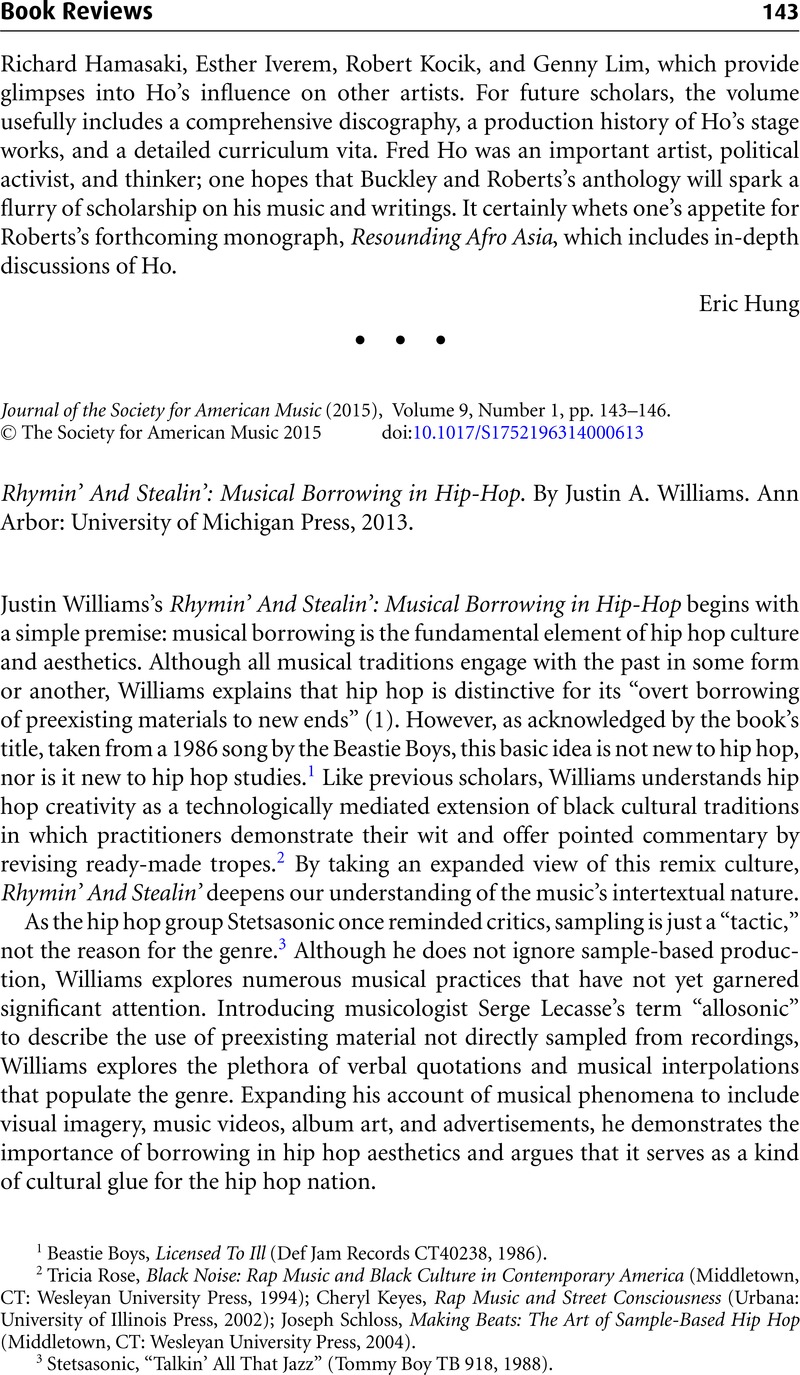No CrossRef data available.
Published online by Cambridge University Press: 04 February 2015

1 Beastie Boys, Licensed To Ill (Def Jam Records CT40238, 1986).
2 Rose, Tricia, Black Noise: Rap Music and Black Culture in Contemporary America (Middletown, CT: Wesleyan University Press, 1994)Google Scholar; Keyes, Cheryl, Rap Music and Street Consciousness (Urbana: University of Illinois Press, 2002)Google Scholar; Schloss, Joseph, Making Beats: The Art of Sample-Based Hip Hop (Middletown, CT: Wesleyan University Press, 2004)Google Scholar.
3 Stetsasonic, “Talkin’ All That Jazz” (Tommy Boy TB 918, 1988).
4 Wild Style presents a rich example of the cycles of borrowing that Williams theorizes in Rhymin’ and Stealin’. To avoid paying royalties for music used in the film, director Charlie Ahearn commissioned original breakbeats from Chris Stein, a member of the group Blondie. Therefore, most of the music in the film was not—contrary to standard hip hop practices—borrowed from preexisting commercial sources. In other words, due to the low budget of the film, DJs could not feature their best borrowed material (i.e., albums containing the most popular breakbeats), and instead had to rely on original tracks recorded for the film. However, musical borrowing is such a fundamental component of hip hop culture that Wild Style's filmic strategy for avoiding paying royalties has now become a sampled track in its own right.
5 Stanyek, Jason and Piekut, Benjamin, “Deadness: Technologies of the Intermundane,” Drama Review 54/1 (Spring 2010): 14–38CrossRefGoogle Scholar.
6 See Missy Elliot's song “Back in the Day” or her music video for “Gossip Folks,” Under Construction (Elektra 62813–2, 2002); See Nicki Minaj's 2007 mix tape Playtime Is Over, available online.